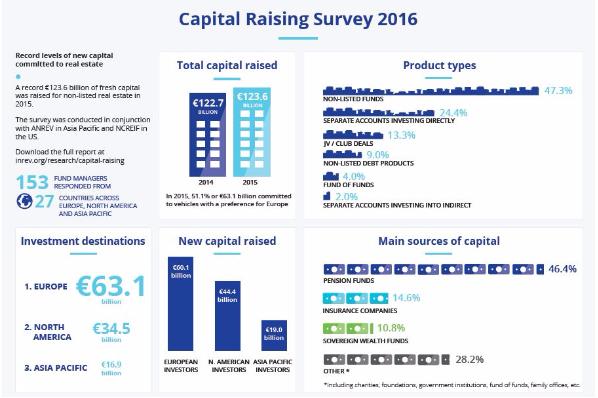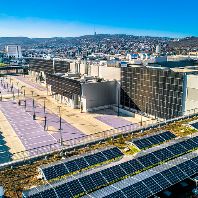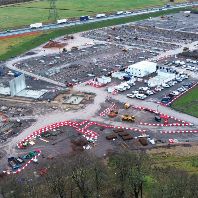A record breaking €123.6bn of fresh capital was raised for non-listed real estate in 2015 with a resounding €57.3bn (46.4%) vote of confidence contributed by pension funds, according to the 2016 Capital Raising Survey, published by INREV, ANREV and NCREIF.
With insurance companies (14.6%) sovereign wealth funds (10.8%) , and – remarkably – high net worth individuals (2.6%) also making significant contributions, Europe stood out as the primary destination taking over half of the total capital raised.
Of the 321 vehicles for which North American fund managers raised new capital, almost half had a European strategy, further demonstrating the region’s continued popularity on the other side of the Atlantic.
This year, for the first time, the survey included global strategies as one of the options respondents could select in terms of where they might focus new equity. The €8.5bn (6.9%) raised for this category points to the ever-increasing globalisation of real estate as an asset class.
Non-listed real estate funds were the most popular vehicle for capital by some way and represented almost half of the total sum (47.3%), followed by direct investment through separate accounts (24.4%) and joint ventures (13.3%). The survey also shows that debt remains a prominent feature in non-listed real estate, drawing 9% of total new capital. Most of this - 72.1% - was raised from European investors. European debt products attracted €3.6bn of equity thanks to the considerable amount of choice in this part of the market.
The overall results underline not just the ongoing viability of the industry but the breadth of opportunity within it. The majority of fund managers expect to see this upward trend continue over the next few years.
“The volume and variety of vehicles that received fresh equity last year is testament to the breadth of opportunity in the non-listed real estate market. But the continuing increase in the volume of capital being raised also brings with it challenges relating to deployment, which is likely to become tougher. Investors and fund managers may need to shift their preferences for risk, style and region to find the investments that can deliver attractive returns,” commented Henri Vuong, director of research and market information, INREV.















